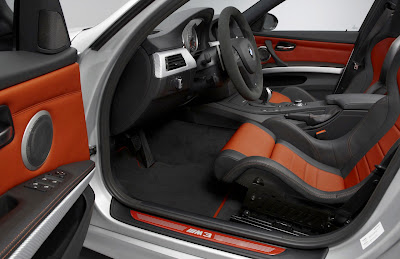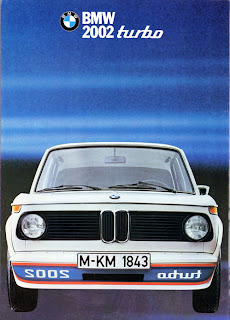I almost had a heart attack when I heard of rumours swirling that BMW may be offering M-cars with xDrive and/or diesel; as any purist should. The thing about rumours is that there is always more to the story, and this story is no exception. One term that was being tossed around 2 years ago when preliminary information on what we know today as the 335is was on the net, was the term M-lite. This was understood as BMW taking an ordinary model and tuning it up both with mechanical and cosmetic upgrades giving it heightened performance character akin to an M without making it bona fide M car. It looks like our logic served us correctly because for the the 2011 model year BMW put out the 335is model. This model featured pretty much the full line BMW Performance upgrades in addition to a factory engine tune-up. This isn't the first time we've seen BMW do this and on January 12th the Chief of BMW M assured everyone that it definitely was not going to be the last. It was announced that this year we can expect to see the first of many models of BMW M Performance vehicles for those “…seeking a particularly sporty driving experience, yet who also value the familiar comfort and practicality of BMW models.” The Chief even went so far as to imply for us to expect this treatment with diesel and xDrive equipped models. Rumour confirmed. No diesel or xDrive M models, only regular models tailored by BMW M and injected with a little extra M DNA.
Taking a look back will provide you with some insight as to how BMW M took regular models and stroked their brush instead of painting their M portrait.
Let’s think back to the humble beginnings of BMW M. The first production vehicle to be adorned with the famed M Badge is the 1979-1981 BMW M535i. What BMW did was take a half-M E12 5-series of sorts and dropped in a variant motor bored out to 3430cc. Technically, the first BMW to be touched by BMW M is known as the E12 Motorsport 533i, however, this model was made in very limited production and its only feature was the tuned-up 3.3L inline-6 motor. But it was the 1979 BMW M535i that came with the full treatment. Recaro seats, close ratio 5 –speed gearbox, and next –generation E28 suspension are among a few cosmetic and performance enhancements that came with this model. As per the usual at this time the North American model had to be catalyzed and BMW subsequently produced a US version with the less powerful S38 engine in place of the original M88. The restriction of the catalytic converter brought power down to 256hp from 282hp. With BMW's trusty 6-shooter up front it was still a potent combination.
The M535i was a success and shortly after in 1983 BMW unveiled the M635CSi. This one was a huge hit with its iconic shark-nose front fascia, all the M-goodies from the M535i, including the S38 engine. The cool thing is that the engines used in the M535i and M635CSi are the evolution of the straight-six used in the legendary M1 supercar. Something of familiarity for us arose for the North American model in 1987 when it carried the official M6 moniker. However this was simply a product planning decision made for this market based on the reason that an 'M6' would fit better in the line-up which at the time featured an M5 and M3. The US and Canada's new 'M6' did receive some distinctive upgrades but nothing beyond comforts like leather and rear zone climate control.
Here's a link to the official M635CSi/M6 Registry where there are far more details on this iconic BMW coupe.
For the next 16 years the US and Canadian market would not see the same stroke of the brush, only a glimmer of M in the ordinary non-M lineup. This was by way of a distinctive and optional M-Tech package. This was a step above your regular Sport Package where instead of pinsy upgrades like aluminum trim and and a 3-spoke'sport' steering wheel you get much more noticeable upgrades like the full M-Aerodynamic body kit, special M-wheels, and more pronounced M-trinkets inside like a more masculated, chiseled M-steering wheel and handsome illuminated M-shift knob (for those that opted for a manual). Firmer and slightly lower suspension was also included. But that's where BMW M's services ended. No power added and no BMW Performance parts existed. The 3 series (E30, E36), 5-series (E34, E39), and 7-series (E38, E65/66) platforms all had some optional variation of this nature.
Let's take it to the end of the 16 year spell to the L.A. Auto Show in 2003 where BMW unveiled the 330i M-Performance Edition (at least this is what it was marketed as in Canada). Apparently the child of BMW Individual, a division of BMW M, this car received quite the treatment. Starting with the most distinctive colour of this generation and the colour selected for the press car, Imola Red. Many do not know that this is not just an official M colour, it is one of the top 3 most official colours because it was lifted right off the flagged M logo. Those 3 coloured stripes we've all grown fond of is Laguna Seca Blue, Interlagos Blue, and Imola Red, respectively. The M54 motor found in E46 330's normally put out 225hp but with more aggressive cams and an accommodating factory engine tune, this engine puts out 10 more hp and 8 more torques. Suspension was lower and firmer than both the optional Sport suspension and standard suspension but this time they utilized M-front control arms and M-rear trailing arms with a little more negative camber dialed in for improved cornering. The transmission available was a 'first-ever in a non-M' close-ratio 6-speed manual with a short throw shifter and shorter weighted shift knob. Alcantara was found on seat bolsters, covering the headliner and pillars, and around the steering wheel and shifter. The M-Aerodynamic body kit was only natural and complemented by a subtle lip spoiler on the trunk lid. Staggered 18 inch M-wheels were also offered only with this package making picking this car out of a crowd a cinch. The M-Performance Edition was available in sedan, coupe, and convertible form from 2003 to 2006, the last E46 sedan model year being 2005. It is more commonly known as the 330 ZHP after its official BMW USA option ordering code. This generation and this model in particular sold quite well and solidified the BMW 3-series as thee bona fide sport sedan. It must be told that this car was born out of necessity as BMW would put it, because the E46 generation did not carry on the M-sedan guise the E36 generation started. So they had to come up with something to busy the complainers and busy them it did because we are still talking about it. By we I mean me because ironically enough I own one exactly like the one pictured.
For more information on the 330 M-Performance Edition/ZHP, check out this FAQ page kindly provided for and by the ZHP community.
Now it's 2010 and people get word that BMW is cooking something up for the already spectacular 335. Modifications and accessories are all good but they don't hold a candle to something that comes from a factory with the distinction and upgrades one is after. For the 2011 model year BMW replaced the N54 twin turbo motor and replaced it with a single twin scroll turbocharger. Power remained unchanged at 300hp but also put out was a model coveted the 335is. This particular model features a tuned-up version of the outgoing N54 twin turbo motor as well as the option of a dual clutch automagic transmission. Power is up 20hp thanks to the tune, and looks are great thanks to the M-Aerodynamic kit and special 19" is distinctive sport wheels. Unfortunately this was only available in coupe and convertible form.
So according to the M Chief this is going to be kind of a thing now so if you like what you learned in our little history lesson then you can count on looking back in another decade with way more cool memories. All the successful elements are in the mix with what's to come; exclusivity, style, superiority, and down-right fun without breaking your neck or your wallet (compared to an M). It is by no means a replacement for an true M, just somehow manages to be a step above and a step below but very special nonetheless. Sometimes a little M DNA is all you need.
Hear it straight from the horses mouth:











